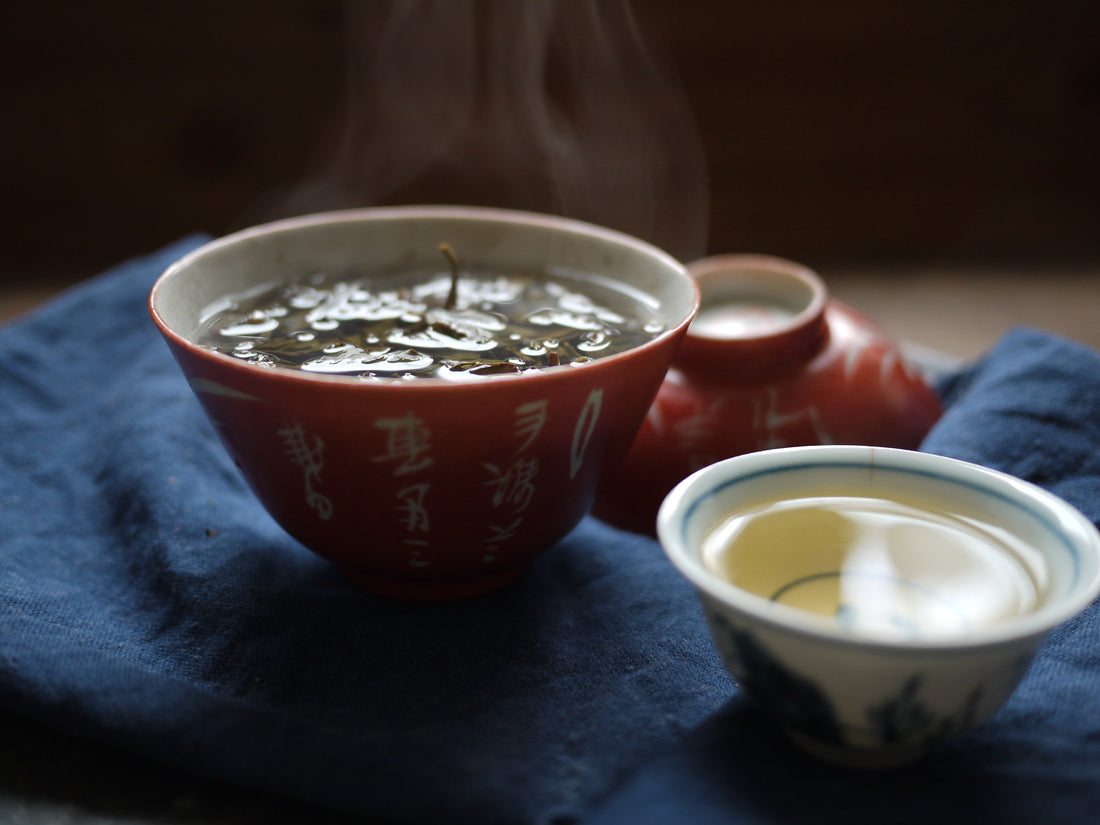
2022 Qing Xiang Ye Fang Cha oolong tea
Share
This one is a oolong tea with a young and interesting story. Maybe even a tea that tries to tell us something. The object of the experiment was created from a blend, although assemblage would be the proper term, of three cultivars with long histories. The two of them are classics of Fujian’ oolong history: Wu Dan, Ben Shan. And the third one is a classic amongst classics: Tie Guan Yin.

Our longtime friend and ‘tea uncle’, Mr Zhang, acquired a parcel of secluded land, not too distant from Da Ping but remote enough to preserve the remnants of a former little tea estate and its tea fields. While these fields were diligently cared for, no alterations were made to disturb their natural environment hence the name Ye Fang (abandoned). Fast forward two years, and the outcome stands before me, and the water is ready. of Fujian’ oolong history: Wu Dan, Ben Shan. And the third one is a classic amongst classics: Tie Guan Yin.

In its dry form, the tea leaves reveal a central note reminiscent of creamy starfruit, surrounded by delicate yellow flowers and a subtle sweetness. Upon infusion, the leaves unfold with hints of roasted chestnut, accompanied by a gentle tanginess and a layered floral essence. This bouquet of floral notes carries me back to my youth at Sun Yat-Sen University, where the fragrance of Zhi Zi flowers (gardenia jasminoides) was almost everywhere. By the 6th brew, the roasted notes fade, making way for the prominent presence of gardenia. By the 10th brew, the warm leaves exude the fragrance of freshly harvested tea leaves straight from the bag.

There is sensibility and definitely craftsmanship to be able to create a sensual oolong from an assemblage of three powerhouses like Wu Dan, Ben Shan, and Tie Guan Yin. Next step is to try the more roasted version of this tea but I look forward to another trip down memory lane with this oolong tea.
There is sensibility and definitely craftsmanship to be able to create a sensual oolong from an assemblage of three powerhouses like Wu Dan, Ben Shan, and Tie Guan Yin. Next step is to try the more roasted version of this tea but I look forward to another trip down memory lane with this oolong tea.
The ratio for this tasting was 8gr of tea leaves for 130ml of water. Water was brought to a full boil and was at least 90c to optimize extraction.
